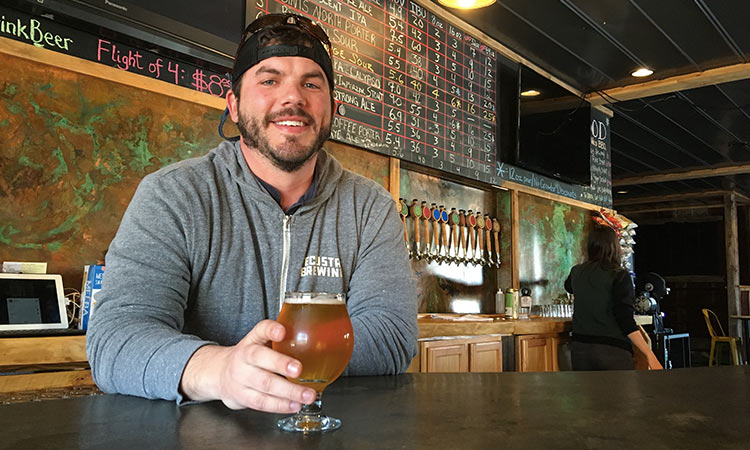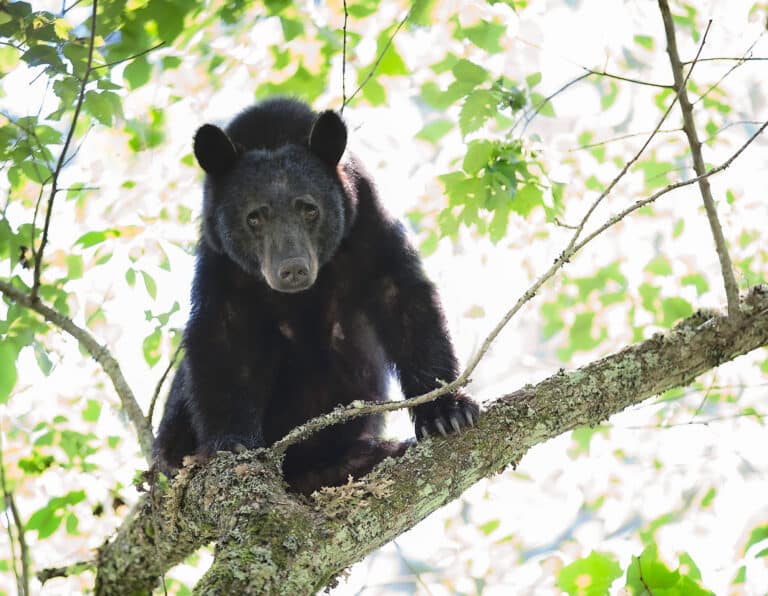Last year I had the pleasure of meeting Bill Zimmer, co-owner of Ecusta Brewing Company, through a mutual friend who was playing a show at the brewery. There were great tunes, bbq, guys dancing in unicorn costumes, and of course, delicious brews.
After a couple beers, we started talking about a new idea they were brewing up (pun intended). It was a sour ale made from a wild yeast that is harvested and propagated from honey bees and wasps. He brought out a sample.
Aptly named the Stinger Sour, this beer was born from a chance meeting with a microbiologist at N.C. State at a charity event in Raleigh, N.C. It’s different from any sour ale I’ve ever tasted. Now, I’m no Cicerone, but I am a sour beer lover, and this is one of my favorites.
Recently I had the chance to sit down with the team at Ecusta, share a couple (more) sours and chat about how this brew came to be. Their team consists of Co-Owner and Founder Josh Chambers, co-owner Bill Zimmer, and head brewer, Don Osby.
So, tell me about the Stinger Sour.
EB: The Stinger is Lambic in style, though, it’s not actually from that region of Belgium (Some Cicerone’s get mad if we call it that). Its Lambic in style in terms of the grain bills, hops, and obviously the wild yeast. It uses the Lachancea Thermotolerans (Bill is not only the co-owner of Ecusta, he’s also director of sales for Lachancea, LLC).
Bill met Dr. John Sheppard from N.C. State University, who was the first to successfully isolate and propagate Lachancea Thermotolerans. While it has been used for some time in mixed-cultures for wine, he’s the first to isolate and propagate it for beer production.
From Yellow Jackets?
EB: It’s from a bee and a wasp population. There are only two breweries that are regularly using this strain. Deep River out of Raleigh is using the wasp strain, and we are using the bee strain. That’s why we named it the Stinger Sour.
So how do these strains of yeast affect the taste?
EB: It’s really meant to kind of highlight the flavor profile of the yeast. It doesn’t have a huge grain bill, is very light on the hops, and highlights that wild yeast profile. It’s a more drinkable, more approachable sour ale.
We joke that the person who might not be an expert on sours immediately gravitates towards it. It doesn’t have a lot of the sulfites you get from barrel aging, like a more traditional sour. It’s just a very drinkable beer.

So Bill is the director of sales at Lachancea. Where are they based out of?
EB: Raleigh. Every time we get the yeast, we’re back in Raleigh. We actually propagate it at N.C. State and drive it back to Brevard ourselves. It has to be purely propagated.
What is the propagation process like?
EB: It’s Dr. John Sheppard’s process at N.C. State. He has the ability to propagate the yeast from his bee colonies at the college. Supposedly it’s relatively easy to get it going, but scaling it up is the hard part.
The interesting thing about the yeast is that with most samples, you can take some right out of a glass and propagate it again. Not with this yeast though. It almost has a “self-destruct” feature. You might be able to create the ethanol on the second fermentation, but you would not get the lactic acid.
Is that something special to Lachancea Yeast?
EB: Well, it kind of highlights how untested the yeast is. A lot of ale yeast has been kicked to the curb and they know exactly whats going to happen with it. This yeast, while it works and you know how it works, hasn’t been tested on a large scale.
We’re behind Deep River Brewing as far as production. They had a several month head start, but the two of us are the only ones using this type of yeast harvested from bees and wasps.
So that means Ecusta is the only one using bees?
EB: Correct! It’s called the BB202 strain.
Is that harvested from a particular type of bee?
EB: Not sure of the exact bee, but Lachancea is the family of yeast that it’s from. They have found it on trees before, but it just hasn’t been isolated and propagated like this. N.C. State actually owns the rights to the patent since they funded the research, but we have a license to use it.
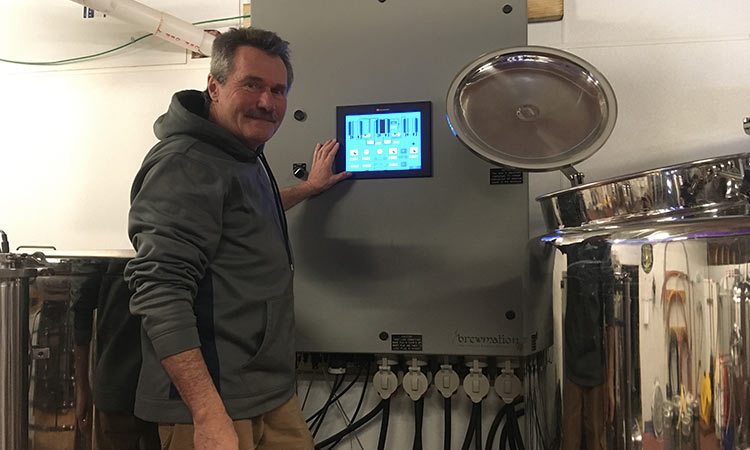
So tell me about Dr. John Sheppard. How did y’all meet?
EB: Dr. Sheppard is the head of Nutritional Sciences and Microbiology at N.C. State. He’s smarter than we will ever be.
When he and Bill first met, they were both involved with the Tammy Lynn Center, a special needs charity in the Triangle Area. They were both at the same event and knew a lot of the same people. A mutual friend told Bill about this great yeast Dr. Sheppard Discovered at N.C. State.
“All of my Spidey Senses turned on,” says Bill. “In my then limited scope of the beer industry, it didn’t process that we could produce a sour without risk of contamination in 21 days with such efficiency.”
It sounded too good to be true.
All of a sudden, everyone was like, “Wait, you guys have sours?”
So you said 21 days, that’s a fraction of traditional sour production right?
EB: I mean, you can do kettle sours quickly, but what’s great about this beer is that it has no risk of contamination. You’re never going to have a run-away population or contamination in your brewhouse. We typically get to about a 3.5 PH in about 3-4 days, so the yeast goes to town pretty quickly on it.
What’s an ideal PH for brewing sours?
EB: Some sours get down to like 3.2, 3.3, so this is not quite as sour or acidic as others.
At a 3.2 PH, you don’t even have to refrigerate right?
EB: Correct. Some of those bottles that are caged get better with time. A lot of beers that have perishable aspects like IPAs have limited shelf life. Some beer, like sours, get better when they sit in a bottle. There is an aging element. It’s been huge because of what it did for us business-wise. It brought us into the sour market at a fraction of the time. We had two sours in rotation within 45 days.
All of a sudden, everyone was like, “Wait, you guys have sours?”
We didn’t have a huge barrier to overcome with our production, giving us a lot more flexibility with time. This allowed us to do collaborations with other breweries like Sanctuary Brewing, where we’re infusing the stinger sour with hibiscus and aging it in barrels. We love being on the innovative side of things. As a smaller brewery, we have the capability to be nimble and just say, “Hey, let’s see if this works!”
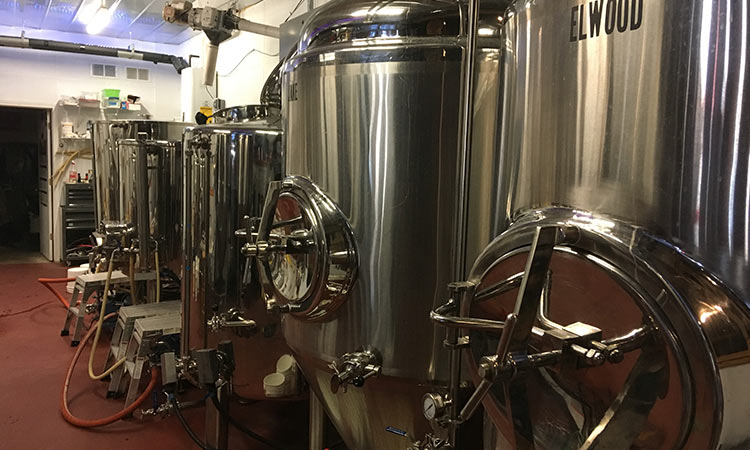
Tell me a little about your R&D process. What was it like developing the Stinger Sour?
EB: The yeast has some unique qualities. It ferments a little bit warmer than other yeasts. “The first time I drove up the yeast from Raleigh, I don’t think the pitch-rate was right,” says Bill. “I don’t think the temperature was right. It wasn’t a failed fermentation, but it wasn’t the fermentation that we would have liked.”
Bill was driving up from Raleigh a few weeks later when Josh called and said, “I think it worked.” Bill replied, “what do you mean?” Josh follows, “dude this tastes great, and I don’t like sours.”
Josh and Don are not sour drinkers, so we knew it had worked when Josh said: “Don actually likes it!”
Bill laughs, we had asked Don, “how’s it taste?” and he said, “like a sour.”
That’s a good thing, right?
EB: Right! We have such a consistent following that’s coming in here and loves that lambic style, so we’ve played around with it.
We actually had some extra yeast we used to brew the Rye’d On Pale Ale. Some of the elements of the Rye’d On were complimentary towards that sour profile, so we thought, “Why not infuse it with the Lachancea Yeast and see what happens?”
It turned out pretty well.
I think it turned out great! (I’m drinking one at this point).
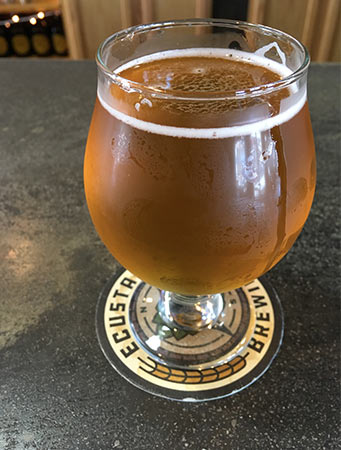
EB: Thanks! As of now, we have two on draft regularly and our hope is that by this summer we’ll have four sours on draft regularly.
There aren’t many other small breweries that are doing that around here are there?
EB: I think there will be some more in the future for sure! For us, strategically, we were kind of looking around us and said well, “Sierra Nevada you have West Coast styles, Oskar Blues has High Gravity, and then Brevard Brewing probably has the best Pilsner and Lager (in the state),” so for us, we naturally gravitated towards sours.
Granted, we do have some fantastic dark beers.
That Pecan Porter Though!
EB: Our Pecan Porter and Point Star Porter are fantastic. I feel we’ve really excelled in those two areas, and selfishly, I think I like it because our beer just keeps getting better and better.
You mentioned the hibiscus and the barrel aged sour, how did this idea come about?
EB: Joe from Sanctuary started his career (to some degree) with Wicked Weed, so he is a lot more comfortable in the sour realm than we previously were. He has a lot of uniquely awesome ideas about what we should do in terms of beer styles and I love how he thinks from a brewing standpoint, so we definitely put it back on him for this one.
We get to have a lot of cool and fun experiments with some ingredients that not a lot of people get to play around with. It’s been great!
What’s next for Ecusta Brewing?
EB: We’re looking to add more sour of course, as well as new beers in the New England and Double IPA category. We’re want to grow our taproom by adding a food menu. As we get towards having more sours on tap, we’re going to do some limited bottle releases every once in a while. Canning is starting on May 21, with another canning party planned before Memorial Day Weekend.
We want visitors who are heading to into Pisgah National Forest to be able to stop by and pick up a six-pack before they head in.
Well, guys, I wish you nothing but the best! Thanks for the beers and thank you for your time.
EB: Cheers!
Justin Forrest is an outdoor writer, fly fishing addict, and co-founder of Narrative North—based in Asheville, N.C. He posts pictures of cats and fishing on Instagram sometimes.
